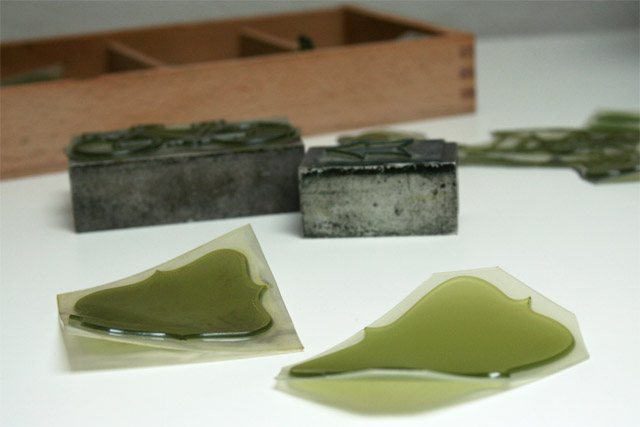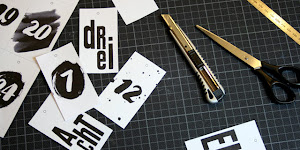
Hey, ist hier jemand mit dem gleichen Problem?
Diese zwei Formen dort haben sich recht bald nach dem Entwickeln des Nyloprints zusammengerollt. Im letzten Winter habe ich sie mal auf die Heizung gelegt, damit sie biegsam werden und dann unter einem riesigen Bücherstapel gepresst. Um ehrlich zu sein hat das überhaupt kein bißchen geholfen.
Ich habe schonmal hier und da gehört, dass die Nyloprints sich manchmal rollen. Ich hatte eigentlich kein Problem damit, denn ich verwahre sie meistens montiert im Regal. Die kleinen kleben auf Unterlegstegen und die größeren auf MDF. Ich packe sie in Nichts sonst weiter ein.
Auf Dolce Press habe ich heute morgen gelesen, man solle es mal mit einem feuchten Geschirrhandtuch und einem Zip-Lock Plastikbeutel versuchen. Das werde ich gleich ausprobieren. Andere Tipps und Tricks sind aber auch Herzlich Willkommen, falls jemand was weiß. Danke! :)
--------
Is there anybody with the same problem reading here?
These two plates started to curl some days after developing the plate. Last winter I've placed them on my heating to get them smoother and pressed them between heavy books. No reaction at all.
I do not have that problem with all my plates, just with these two. Normally I leave my plates mounted and store them on my shelf, no problem. I think it has to do with Humidity, but I wonder why the other plates don't curl.
This morning I read on Dolce Press that a dampen towel and a zip lock plastic bag could help. I'll try this soon, but if you have any other suggestions let me know. Thanks! :)








Übrigens hat es funktioniert. Ich habe sie etwas zu lang im feuchten Handtuch gelassen, über 45 Min. und jetzt wellen sie sich in die andere Richtung, aber das nur ein bißchen. Immerhin! Super.
AntwortenLöschenAch, Ihr Nyloprint-Polymer-Drucker, das sind Probleme! Dazu muß man (frau) wissen, daß diese Kunststoff-Druckformen ursprünglich in den 60-ger Jahren entwickelt worden sind, um auf einen RUNDEN Formzylinder aufgebracht zu werden für 2-Farbmaschinen "Rund-Flach", bzw. Letterset (dieser Ausdruck würde jetzt hier zur Erklärung zu weit führen). Daher auch die Elastizät. Die relativ preiswerte und einfache Herstellung dieser Druckvorlagen verleitet die "neuen" Buchdrucker natürlich zum Einsatz. Meine Erfahrung geht auf das gute alte Klischee aus Metall (inzwischen Magnesium) zurück, da gibt es fast keine Probleme, nichts verzieht oder rollt und man (frau) kann ordentlich Druck `raufhauen ohne Quetscher,
AntwortenLöschenwas ja z. Zt. beim "Letterpress" sehr angesagt ist.
I have this problem a lot with images that are large and "filled" in. I use a lot of approx. 4" images for coasters. I live in dry, dry, dry Colorado. All my poly plates are kept in zip locked bags that I breathe into a few times then seal and put in plastic bins for storage. When it comes time to use and they are curled I let them sit in zip lock bag in boiled water for an hour or so with a heavy weight. If I don't warm up and rush to print when I bend them they crack + I cry!! Good Luck.
AntwortenLöschen@Helmut: ja, Magnesium verwende ich auch mittlerweile häufiger, besonders bei kleinen Teilen. Bei großen Bögen kann ich es mir jedoch nicht leisten. :)
AntwortenLöschen@Moose: thank you! It worked with that dampen towel, but when getting dry they curl again. I'll get me a few zip lock bags and try to store them as you said. Thanks again!
I've had this problem too, which is why I prefer the metal-backed photopolymer. No glue seems to be strong enough to hold them down flat; my solution was nails!
AntwortenLöschenMay I as where you get your photopolymer plates done? In Germany?
AntwortenLöschenyes at www.jaehde.de But I know some printers in Milano, please send me an eMail for more infos :) Sabrina
AntwortenLöschen